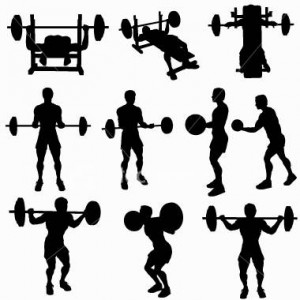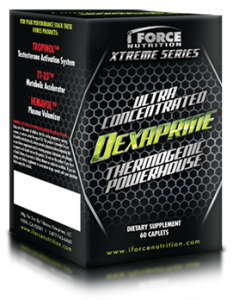Why Cardio Isn’t Necessary for Weight Loss
Cardio workouts are among the most excellent forms of physical conditioning. When done in the right way, low steady state cardio, i.e. brisk walking and jogging, gets your heart rate up safely and easily. More often than not, these cardio workouts do not put too much physical stress on your body, allowing you to perform these workouts with much more frequency. For people who hit the streets or the mountains, running on a slow steady state is a form of stress release or active rest. While cardio workouts allow you to enjoy better physical conditioning, it’s another story when it comes to the much-dreaded talk of weight loss.
First, the figures. As much as consistent cardio training is crucial in getting the heart rate up and in improving endurance, low intensity steady state cardio workouts such as jogging help burn an average of only 5kcal/min. As such, it should take you approximately 60mins every day to burn a significant number of calories, let alone lose weight. While this rate of fat burning is generally okay when you are just maintaining your body weight, or if you are just aiming for regular physical activity, it does not do well when you are trying to lose all those pounds that you have gained over an entire calendar of workout hiatus. Traditional slow cardio workouts, regardless if it is good old fashioned jogging or treadmill/stationary bikes/elliptical machine workouts, tend to consume far too many hours to deliver optimal weight loss results.
What Kind of Training is Most Efficient?
Cardio workouts in high intensity or high intensity interval training, on the other hand, present a much more promising rate of fat burning with 15kcal/min – 3x as more than traditional slow cardio. However, as it is more physically demanding than slow steady state cardio, the body takes longer time to recover from high intensity cardio. As such, high intensity cardio is not advised to be performed with the same frequency as with slow steady state cardio.
Instead of relying too much on cardio workouts to meet your fat burning needs, you should hit the gym and lift weights. In other words, engage in resistance training. In the history of bodybuilding, resistance training has had such a high success rate that the American College of Sports Medicine has recommended resistance training to all Americans since 1998.
By definition, resistance training happens when the body is engaged with some amount of external resistance (such as weights, dumbbells, and your own body weight) that causes the muscles to exert effort, which in effect burns body fat while building muscle mass and endurance. Engaging in regular resistance training is especially beneficial as it burns all the extra calories while building and maintaining lean, toned muscles.
Resistance Training: How to Start

In the history of building a better body, resistance training has had a very high success rate that the American College of Sports Medicine has recommended resistance training to all Americans since 1998.
In his book The Fat Loss Factor, Mark “The Machine” Lobliner has cited the following as among the more efficient resistance training workouts. You might want the give them a go the next time you hit the gym! But make sure that even as you push yourself to your limits, you are aware of how much physical stress your body can take. Otherwise, you will just burn yourself out, and the entire thing becomes counterproductive.
For your legs – squat, leg press, lunges, leg extensions, lying hamstring curls, lying leg curls, single leg curls, seated hamstring curls, seated calf raise, standing calf raise, squats, hack squats, stiff leg deadlifts, standing calf raises, seated calf raises.
For your back, and chest – lat pull downs, dumbbell bench press, t-bar rows, incline dumbbell flys, hammer strength, cable rope pullovers, cable crossovers.
For your chest – incline barbell press, hammer strength seated bench press, incline dumbbell flyes, cable crossovers.
For your chest, and triceps – incline bench press, dumbbell bench press, incline dumbbell flys, cable crossovers, skull crushers, triceps pressdowns.
For your shoulder, triceps, and abs – smith machine presses, db presses, seated laterals, one arm cable laterals, dumbbell shrugs.
For your triceps – triceps pushdown, lying ez-curl barbell extensions.
Back, and rear delts – hammer strength pulldowns, barbell rows, hammer strength one arm rows, cable rows, hammer strength rear-delt machine, reverse pec deck, bent-over dumbbell raises, weighted hyperextensions with bar across back/traps, deadlifts.
For your biceps – incline dumbbell curls, ez-curl barbell curls, nautilus curls, cable curl.
For your shoulders, and biceps – dbr shoulder press, smith machine shoulder press, lateral raise, hammer strength, preach bar preacher curl, barbell curl, incline dumbbell curl.
Training goes Hand in Hand with DIET: Intermittent Fasting
Of course, workout without the right diet is pretty much peanut butter without jelly, as Mark Lobliner would put it. This is simply to say that workout and the proper nourishment should always go together. After all, gym and kitchen training is the duo that builds a healthy body. The very same is true in losing weight.
Because losing weight requires a very specific need – a caloric deficit – it therefore requires a very specific diet. Among the dietary methods that have acquired popularity and proficiency over the years is “intermittent fasting.” Intermittent fasting can be defined alternating periods of fasting and non-fasting, sometimes gradually migrating to a strict regimen of longer hours of fasting and shorter hours of feasting or non-fasting.
There are many diets that fundamentally follow the principles of intermittent fasting. Among the more popular are the Warrior Diet which has you eat for 4 hours and fast for 20 hours, Alternate Day Fasting which has you eat for 24 hours and fast for 24 hours the following day, and the Lean Gains which has you eat for 8 hours and fast for 16 hours.

Dexaprine is specifically designed to help your body lose all unwanted and unnecessary fats in a faster rate while, at the same time, improving your energy level and output.
The increasing popularity of intermittent fasting as a weight loss fundamental is in no small part because of its apparent effectiveness. In a related study that was published in the American Journal of Clinical Nutrition, 16 normal weight adults followed alternate day fasting within a 3 week period. During Y days, or fasting day, volunteers ate nothing and had nothing except zero-calorie drinks, and during X days or feasting days, volunteers were permitted to eat as they would normally do. Upon the conclusion of the experiment, researchers have reported an average of 2.5 weight loss in the initial body weight of the participants together with an average of 4 percent fat loss.
Given that you train well both in the kitchen and in the gym, weight loss products such as iForce Dexaprine should come in handy in improving your weight loss development.
Two years ago, iForce came up with a real winner in Dexaprine. This dietary supplement is designed to help your body burn fat at faster rate while at the same time improving energy production and output. This is just to say that it works twice as good, the perfect 1-2 combo, so to speak. As Dexaprine actively leans out your body, it doses you with incredible amounts of energy that helps conquer your workouts even more efficiently, even those workouts with higher, more demanding intensity.
Leave a comment
Your email address will not be shared or published. Required fields are marked *
